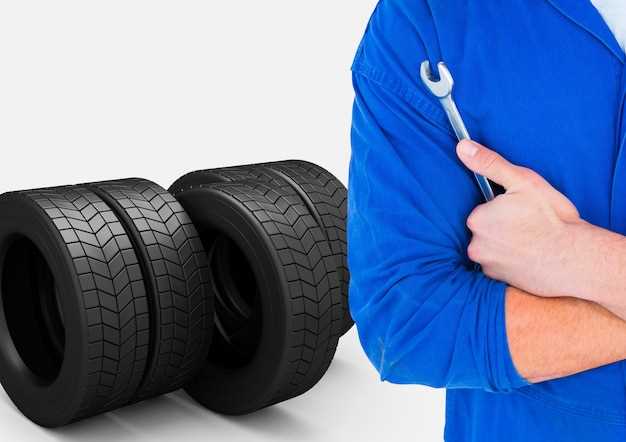
When it comes to maintaining the longevity and performance of your tires, proper storage during off-seasons is crucial. Seasonal tires, whether winter or summer, require careful handling and suitable environments to ensure they remain in optimal condition. Incorrect storage can lead to premature wear, reduced traction, and even potential safety hazards when you decide to use them again.
Understanding the best practices for storing tires can save you time and money in the long run. It is essential to choose a clean, dry area that is away from direct sunlight and extreme temperatures. This helps prevent the materials from breaking down and maintains the integrity of the tire’s rubber. Additionally, proper stacking or hanging of tires can significantly impact their shape and overall health.
In this article, we will explore expert-recommended techniques and tips for securely storing your seasonal tires. From choosing the right environment to preparing tires for storage, these guidelines will help ensure your tires remain ready for the road when you need them most. The security of your tires is paramount, as it directly affects your vehicle’s performance and safety.
Choosing the Right Environment for Tire Storage
When it comes to storing tires, selecting the appropriate environment is crucial for their longevity and performance. Tires should be kept in a cool, dry place to prevent damage caused by heat and humidity. Ideal storage temperatures range between 32°F and 77°F.
Excessive heat can accelerate the degradation of rubber compounds, while moisture can lead to mold and rust, particularly if the tires are stored mounted on rims. It’s recommended to keep tires off the ground, using racks or pallets, to minimize contact with moisture and potential contaminants.
Additionally, protecting tires from direct sunlight is essential, as UV rays can cause rubber to crack and deteriorate over time. Indoor storage is preferable; however, if outdoor storage is necessary, use protective covers that are designed to block UV exposure.
Air circulation is another factor to consider. A well-ventilated space helps to prevent moisture accumulation and ensures that tires remain dry. Avoid enclosed spaces with little airflow, such as basements or sheds that lack ventilation.
Finally, check that the storage area is free from harsh chemicals or solvents, as these can also negatively impact tire integrity. By creating the right environment for tire storage, you can ensure their durability and safety for future use.
Steps for Proper Tire Preparation Before Storage

Before storing seasonal tires, proper preparation is essential to ensure their longevity and performance. Start by cleaning each tire thoroughly. Remove dirt, grime, and any residues that may have accumulated during use. Use a gentle soap solution and a soft brush to avoid damaging the tire’s surface.
Next, inspect the tires for any signs of damage, such as cracks, bulges, or worn tread. Any damaged tires should be repaired or replaced before storage to avoid complications later on. Additionally, check the tire pressure and inflate them to the manufacturer’s recommended PSI level to maintain their shape during storage.
Once cleaning and inspection are complete, it’s crucial to store the tires in a cool, dry place away from direct sunlight and extreme temperatures. If you’re stacking the tires, store them vertically to preserve their structure. Alternatively, if they are mounted on rims, store them horizontally, but avoid stacking more than four sets to prevent deformation.
Finally, consider using tire covers or bags designed for storage. These products can help protect the tires from dust, moisture, and ultraviolet rays. Proper preparation and storage extend the lifespan of your seasonal tires, ensuring they are ready for use when the time comes.
Tips for Organizing and Securing Stored Tires

When it comes to storing seasonal tires, organization and security are key to ensuring their longevity and performance. Begin by cleaning each tire thoroughly to remove dirt, grime, and any chemical residues. This step prevents deterioration and helps in better inspection before the next seasonal change.
Consider using tire racks or shelving units specifically designed for tire storage. These racks not only keep tires off the ground but also allow for easy access and organization. Storing tires vertically can save space and minimize the risk of deformation, while horizontal stacking should be limited to prevent excess weight on the bottom tires.
Clearly label each set of tires for easy identification. Using markers or tags can help distinguish between summer and winter sets and indicate which tires are front or rear. This practice simplifies the swapping process and ensures the correct installation for optimal performance.
For added security, invest in a lockable storage area or use security straps to secure the tires in place. This minimizes the risk of theft and ensures they remain protected from environmental factors. If storing tires outside, waterproof covers can provide additional protection and keep them in good condition.
Lastly, periodically check on the stored tires to assess their condition. Look for signs of wear, cracking, or any other issues that may require attention before the next season arrives. Regular maintenance and monitoring can extend the life of your seasonal tires and ensure safe driving when they are needed again.



